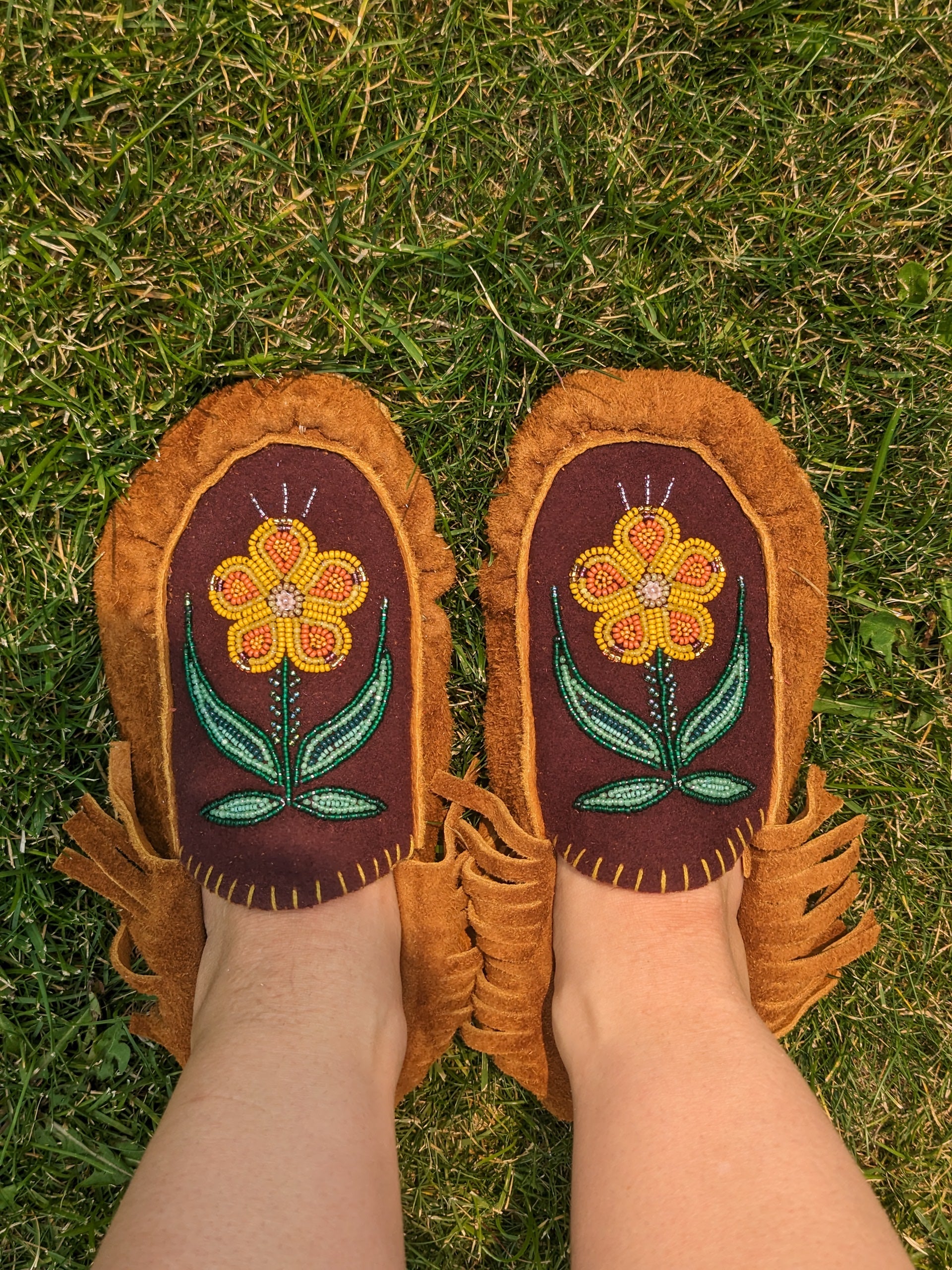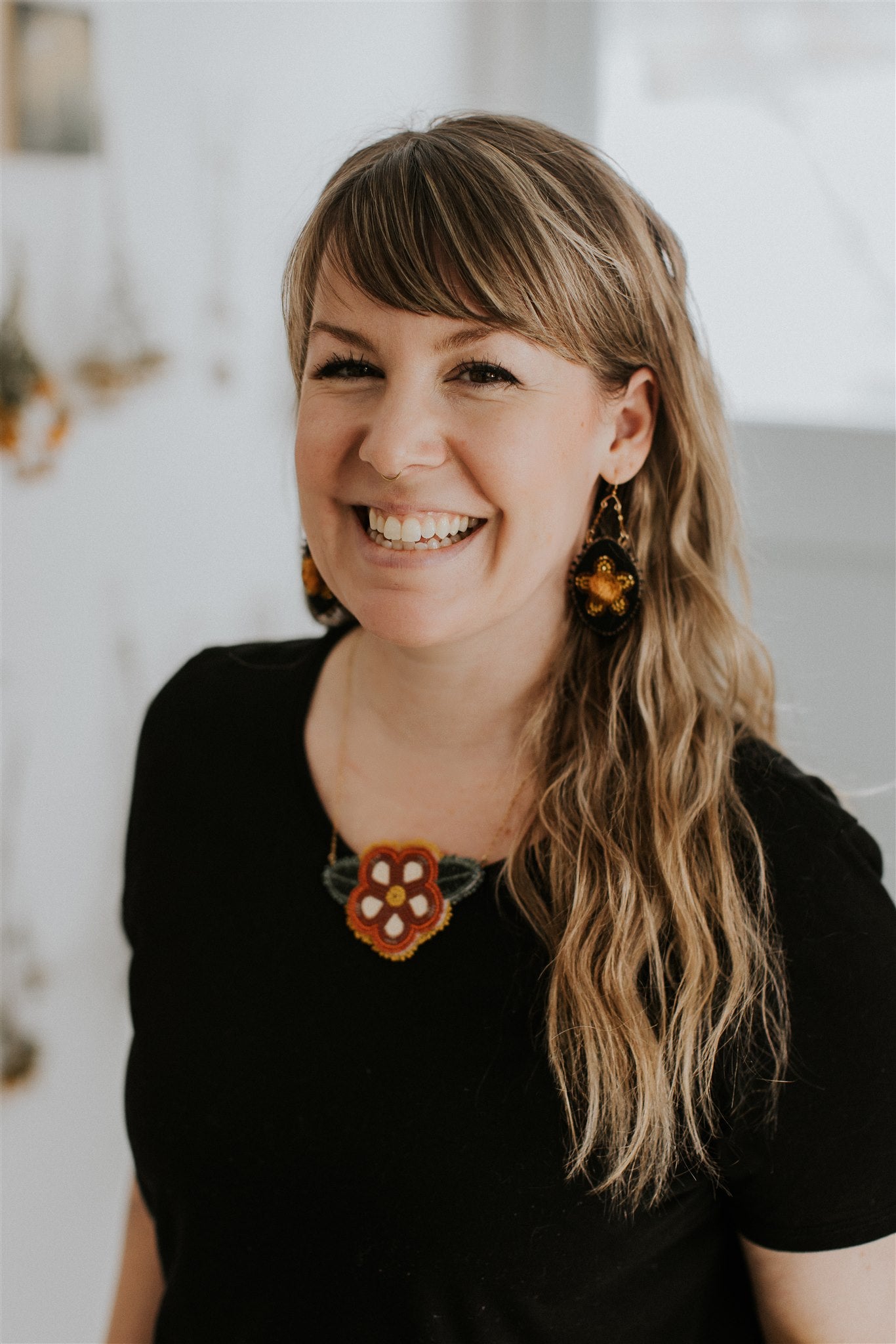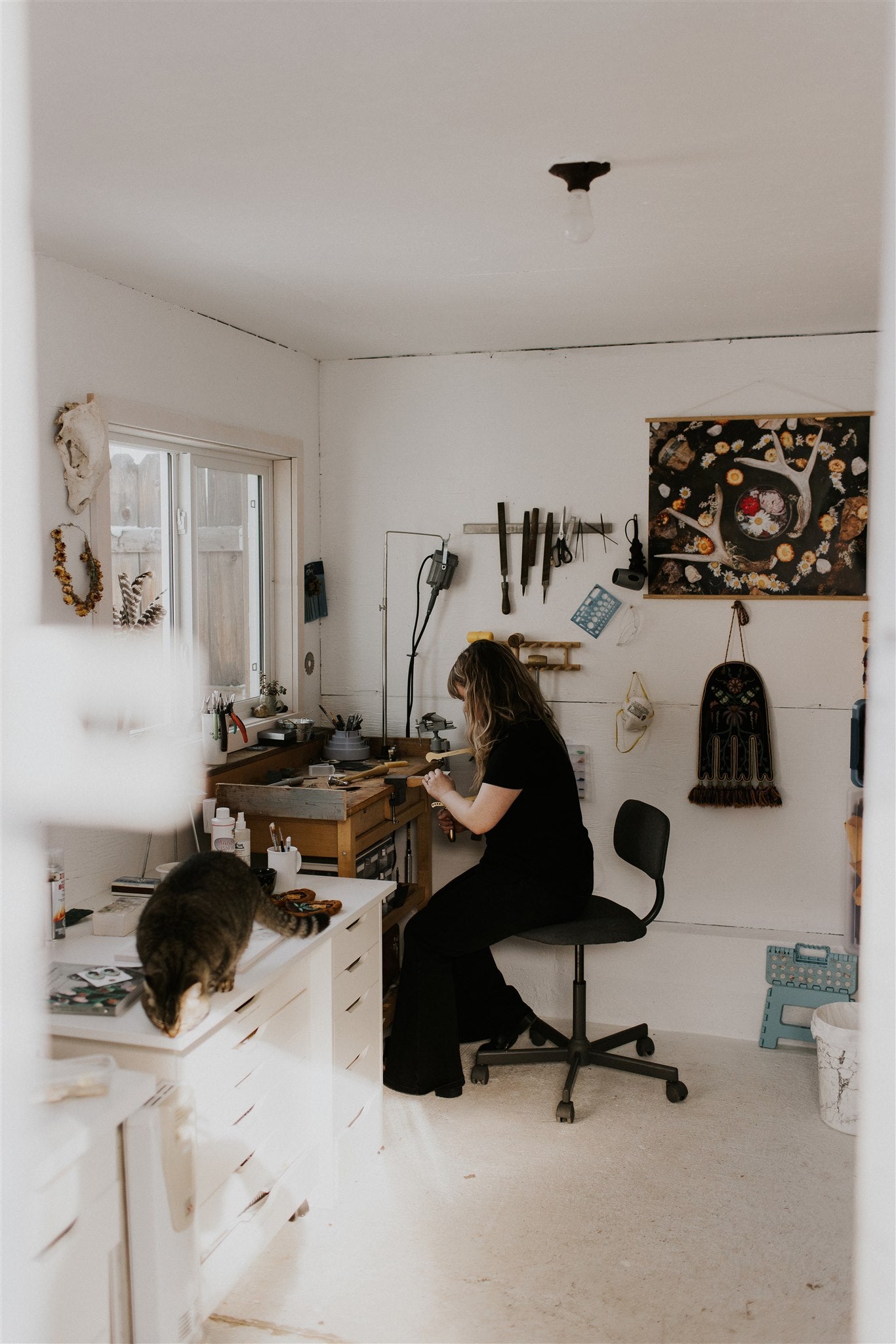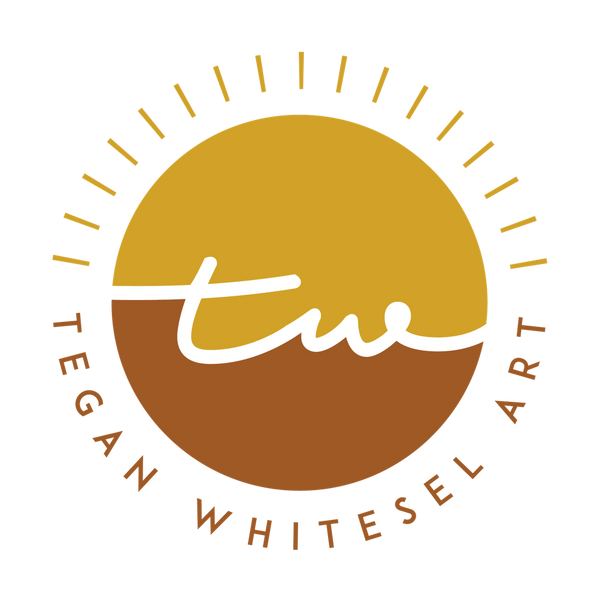
“Being an artist means forever healing your own wounds and at the same time endlessly exposing them.” Annette Messager.

Tegan Whitesel
Biography
Tegan is a mixed media artist of Métis and settler descent. Her artwork includes beading, metalsmithing, painting and material arts. She lives in Kimberley, BC on traditional Ktunaxa Territory. She received her BFA from Emily Carr University and her BEd from Simon Fraser University on traditional Musqueam, Squamish and Tsleil-Waututh territory before returning to the Kootenays.
Tegan engages with her local chartered community the Rocky Mountain Métis Association to share traditional Métis artistic knowledge. She has given artist talks in various institutions including the College of the Rockies and local school districts. She teaches workshops to Indigenous and non-Indigenous community members.
She has been awarded grants from the First Peoples Cultural Council, the BC Arts Council, and the Columbia Kootenay Cultural Alliance for the creation of new work. In 2022 she was one of 12 artists selected to participate in a Octopus Bag mentorship taught by renowned Métis artist, historian and writer Gregory Scofield. Tegan is part of the Amelia Douglas Institute’s community of artists and is mentored by Métis artist Lynette La Fontaine in beading, tufting, moccasin making and other material arts.

Artist Statement
My process braids traditional Métis material arts with contemporary approaches and subjects.
Creating beadwork, tuftwork and moccasins is a journey to honor my ancestors and learn about my culture. I draw inspiration from blood memory, traditional Métis motifs and personal stories. My subject matter includes plant identification, gardening, connection, place, mental health, motherhood and folk songs.
When I bead, I think of the person I'm making the work for. I think of my ancestors beading by candle light and all of my kin keeping this artform alive. I think of the Louis Riel quote “My people will sleep for one hundred years, but when they awake, it will be the artists who give them their spirit back.” This connection becomes part of the artwork. I am an advocate for sharing these traditional processes with my community members. My work is an act of resilience, increasing Métis visibility and validity.
